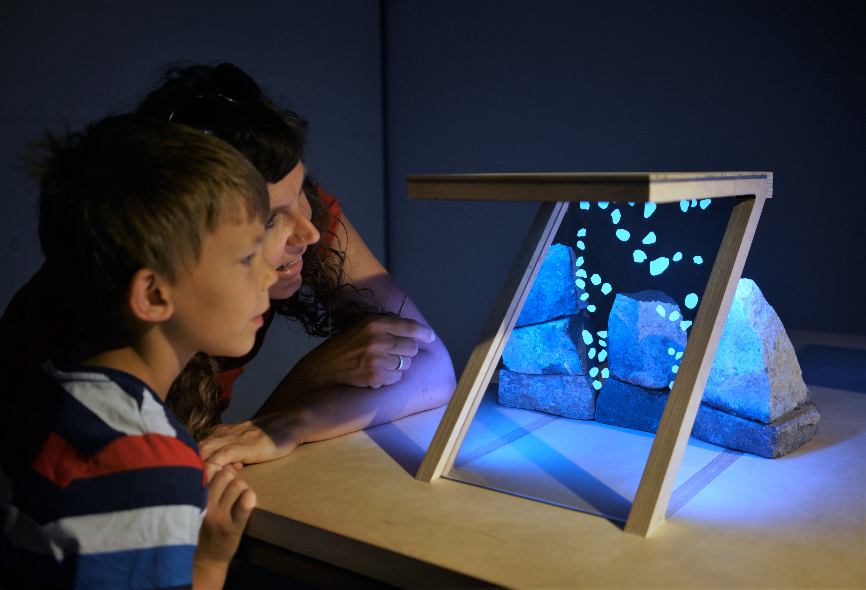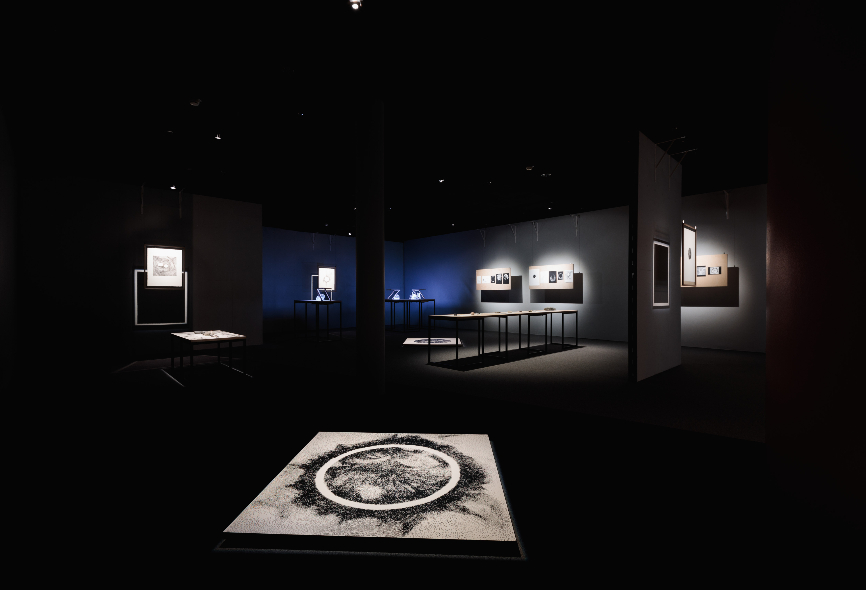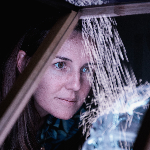Mirages & miracles is an augmented reality exhibition by Claire B and Adrien M that focuses not on technology but on experience. Mirages & miracles is a series of installations that immerse you in a very poetic way in virtual, three-dimensional worlds. Augmented drawings, holographic illusions and a virtual reality headset are just as much a part of this exhibition as simple stones. Claire B spoke to us about the importance of stones and the future of AR in art.
According to you stones are the most lifeless objects. Is it this fact that fascinates you most about stones or where does this fascination come from?
Claire B: Stones are motionless but they tell stories. They tell you where they were, how they became the way they are and they are full of imagination. So it was a good object to start with.
I recognized that you were playing with the patterns of the stones as well. It reminded me of the imagination that children develope with stones, when they stare at the clouds, …
Claire B: Not only children. Together with Adrien we always try to create objects where people feel like children, even if they are not children anymore. It’s this kind of relationship to nature and ability to observe that children have, that we wanted to create also within adults. Sensibilities and experiences. With this kind of objects, we want to give people the opportunity to pay attention. To feel that the invisible is hidden everywhere and if you pay attention, you can see something.

What is the role of Augmented Reality and of tablets in this?
Claire B: For us, technology is not the end. It’s always a way to give an experience. And we like it when technology is hidden, driven to reveal something hidden. And I hope one day this project will be proposed with glasses. AR glasses for example so that you don’t have a tablet in hand but you just see. I like the idea that we can propose to people to have an experience with this kind of tools that they know very well but it’s not a commercial experience, or a useful experience, it’s only poetic. It’s important for us to take a part in the field with no use, no goal, no nothing, only poetry.
But don’t you think that those technologies are often connected with commercial uses? Is it easy to get rid of those contexts?
Claire B: It’s difficult. We need to invent these kind of spaces and this kind of interaction with technology and it’s important to feel that you can use this tool but there is no multinational company beside, no commercial goal, no nothing. Just pleasure and a poetic experience.
Another question of mine was if and where you see the limits of Augmented Reality? Is there something that art shouldn’t use it for? Where does it end somehow?
Claire B: I don’t know. The thing I know is if artists don’t try to express themselves, to express their own sensibilities there will be only brands, that will do it. And that’s not fair. Because we need to create this empowerment. Tools can reflect our own personality. But it’s very hard to do it. Because you need to distract it and rebuild it with your own algorithms, your own sensibilities and you need to know it very well. That’s why we do Hackintosh, we create our own software and we always try to build our own system with these tools.
What comes first in your art, in your project: The stone, the drawings or the visualization?
Claire B: Nothing comes first. It’s like a puzzle. And we have pieces. We have the stone piece and the AR IT tool and we have the desire to create something, talking about animate/inanimate life and death and we try to match everything. But sometimes we have only one tool and we have no idea and we try to understand what kind of form comes from this tool, this medium. And the ideas come afterwards. And it’s interesting because in the history of art the idea has come before for a long time. And now with this new media production, creation, we can see that it’s a very horizontal process of creation.

In this exhibition there is the spirit if creativity through all the projects. Which role does creativity play for you, as the artist, and the audience when the experience the exhibition? Can the machine itself be creative as well?
Claire B: It’s difficult but we always try to find the right place for the machine. We don’t want to give it everything. For example when we do shows and we use computers and graphic tablets to follow the dancers while they are dancing it’s always as a human doing this job. There are no sensors. Because we know that the human ability to feel and to give attention to something for the moment is the best option we have in an artistic goal. And in this project we could have done drawings with computers, we could have done many many things with computers, but we try to mix and to match something made in an uncrafted way and something more digital. In the end, people are their own director for the film they do. It’s a question of point of view, of what you see, how you play with it and there’s not only one story, there can be a lot. It’s like the audience is the key, the last piece of the puzzle for this project. It can’t exist by itself.
So Augmented Reality or the tablet is only the tool for experiencing a different kind of reality? It’s not a piece of art itself?
Claire B: No no, it’s not a piece of art, it’s just a tool. When you read a book it’s an augmented reality experience, because you have a real object full of possibilities and your brain, your sensibility is doing a lot of work on this object, from this object. So I always try to invent projects in which people need to work. For example it’s not in color, it’s always in black and white. So people need to invent colors. It’s an example but it’s the way we try to do with technologies. Trying to put technologies in the right place. Not too much. But we try to invent how to play and how to live with technologies because it’s done. We don’t have a choice. And we need to create the future in which we can have a powerful witness experience with technologies. If we won’t invent these technologies it won’t happen. So we need to invent them, now! If we don’t the world will be just awful. Behind technology is human. Technology is nothing without the human intention behind it.


Claire Bardainne und Adrien Mondot bilden gemeinsam das Künstlerduo Adrien M & Claire B. Claire Bardainne and Adrien Mondot together form the artist duo Adrien M & Claire B. It’s work is placed in the field of digital arts since 2004. Its creations are performances and exhibitions, that associate reality and virtuality. Its specificity is the custom-made development of its computing tools. Among the artistic and technological stakes, the attention is focused on the human being and its body, by using contemporary tools in the service of a timeless poetry, developing and using a visual language based on game and pleasure as mediums of the imagination.
